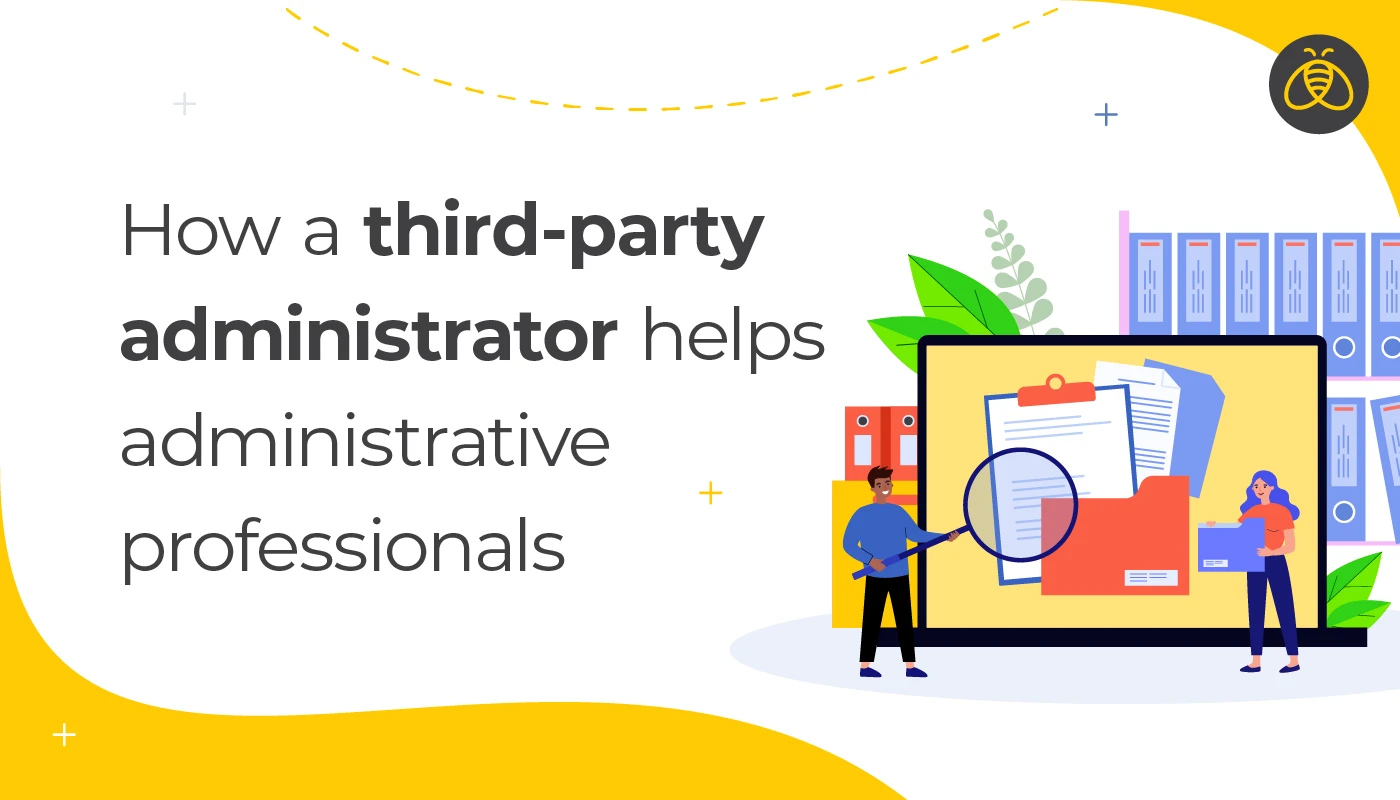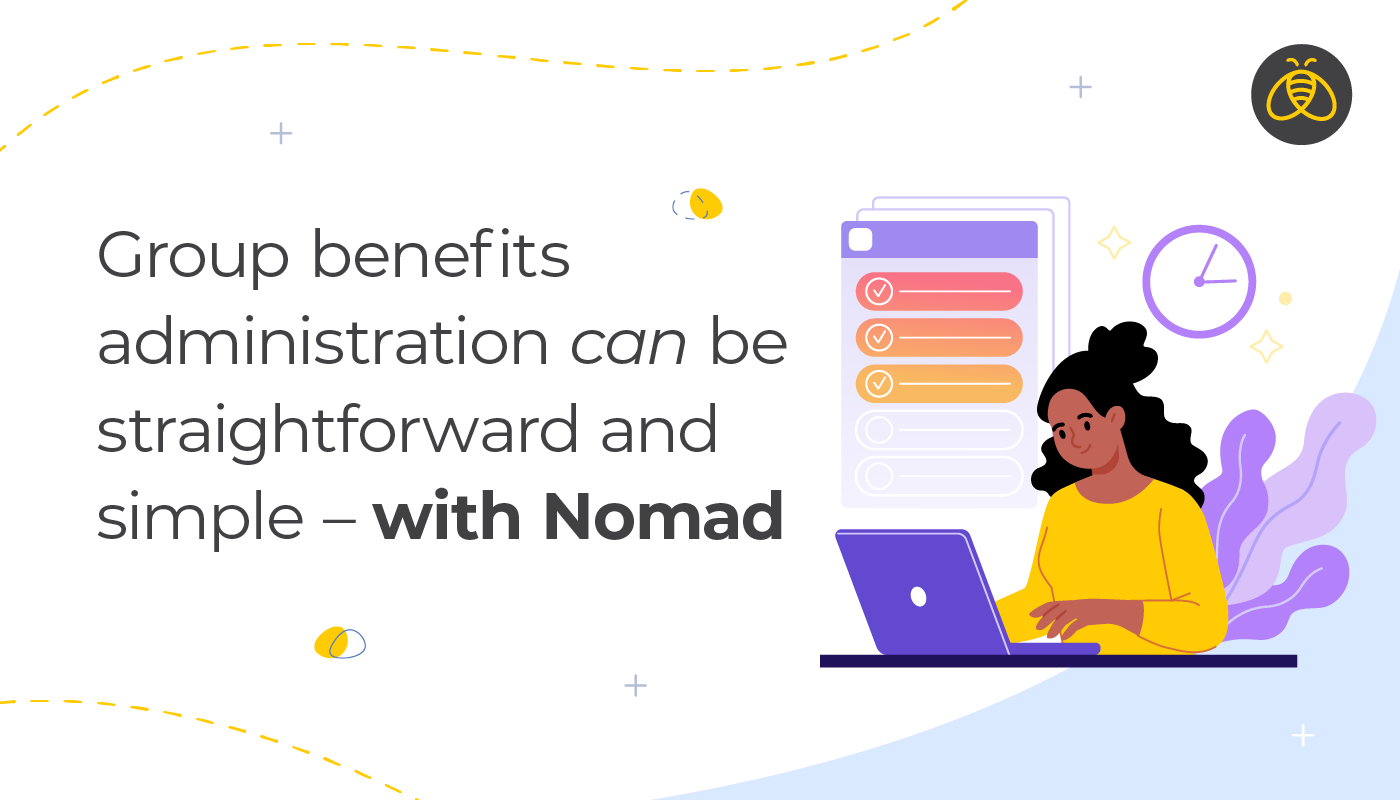How a third-party administrator helps administrative professionals
By: Benefits by Design | Tuesday April 23, 2024
Updated : Tuesday June 11, 2024
How can a third-party administrator (TPA) make the lives of administrative professionals easier? With so many different aspects and ways, there’s no short answer. In honour of the many plan administrators we work with, happy Administrative Professionals’ Day on April 23, 2024.
What is a Third Party Administrator (TPA) And How Are They Different?
What is an administrative professional
Administrative professionals include a number of different occupations. For instance, secretaries, HR administrators, office managers, data clerks, collections agents, receptionists and more. In fact, there are over 100 job titles that fall into the category of administrative professionals.
These dedicated individuals help executives, managers and businesses maintain records, and stay organized. They also do data entry, speak with clients, ensure bills and invoices are properly paid and received, and of course, benefits plan administration.
10 Common Mistakes to Avoid as a Benefits Plan Administrator
How a third-party administrator helps
As you can see, administrative professionals often have a lot on their plate. Depending on the size of the company, one person might have many responsibilities and have duties that span multiple roles. That’s where a TPA can be of immense help and support. By taking on some of the administrative burden, we give time back to the benefits plan administrator in the following ways.
Employee eligibility questions
The group insurance industry has many requirements to ensure that employers, employees, and insurers are following the rules and regulations. Administrative professionals will find these vary depending on the insurer and their coverage. A TPA can provide the correct answer as it pertains directly to their benefits plan.
This includes questions surrounding:
1. Waiting period
This is the time an employee who is working the eligible weekly hours must satisfy before benefits commence. Not to be confused with the probationary period. Some employers have no waiting period, but the most common are three and six months.
2. Late applicants
When an employee has satisfied the waiting period, but does not apply for benefits within a month of that date, they are considered late. The employee can either choose to submit health evidence and be limited to a $250 dental maximum for the first 12 months of coverage. Or they can backpay premiums to the correct effective date of coverage (the date of eligibility).
3. Non-evidence maximum (NEM)
Certain benefits are based on earnings, such as disability benefits, and sometimes life insurance. When the plan is implemented, the insurer agrees upon a NEM. This is the maximum amount of coverage allowed before the employee must submit health evidence to access coverage above the NEM.
4. Spouses
When are they eligible? When should they be added or removed? Are the spouse’s children (the employee’s stepchildren) eligible for coverage as well? All these questions and more depend on the living circumstances, and sometimes vary by insurer. However, plans under Benefits by Design allow married spouses to be added immediately as long as they live in Canada, common-law spouses are eligible after 12 months of co-habitation, and stepchildren are eligible if they are living with the employee and considered a dependent.
5. Overage dependents
The maximum age for dependents may differ by insurer, but usually an employee’s child who has reached the age of 19, 20 or 21 is no longer eligible for coverage, even if they continue to live with their parent(s). The exception to this is if they are attending a post-secondary college or university, and are not earning more than a specified maximum. These dependents are allowed to remain on the benefits plan until age 25 or 26.
Claims assistance
Group insurance claims are sometimes straight forward (picking up a prescription for an antibiotic, for example.) Other times, however, they can be rather complicated, or require multiple forms and submissions, or continuous monitoring and communication.
Administrative professionals can benefit from the help of a TPA on all sorts of claims questions and concerns.
A TPA can elucidate on specific coverage questions, such as what is and is not eligible to be claimed, what the usual and customary amounts are, or frequency limits and plan maximums. We can also help explain why a claim might have been denied, and provide assistance with what the insurer requires in order for it to be approved. Disability claims management is an entire area of expertise within employee benefits. In fact, most insurers and TPA’s have specialists that handle these types of claims. For administrative professionals, having this type of support on your side can mean the difference between a claim being approved or denied, the benefit amount being correct or incorrect, and the employee returning to work or not.
Invoicing
Many insurers require employers to produce the employee benefits invoices themselves, and then charge fees for incorrect invoicing and errors. In other words, the onus is on the employer to get it right. TPA’s not only provide administrative professionals with an invoice, but no matter how many different insurance carriers your benefits plan uses, there is only one invoice. This saves both time and reduces errors.
Reporting, forms and more
How is your benefits plan performing? Do your employees need a specific carrier form? What benefits are available to you, but you don’t currently have?
All of this information and more is at your fingertips when you work with a TPA. You can download reports on claims experience or carrier claim forms and BBD infosheets. Plus, find product details for different benefit lines, download invoices, and add or remove plan administrator assistants.
Renewals
Finally, a TPA can save you time and money if your renewal isn’t favourable under one particular benefit. For example, they can easily add or remove a single benefit line to ease the cost of a big increase at renewal. TPA’s also have the versatility and nimbleness to provide highly customized benefits plans. They can offer to update or improve very specific benefits within a benefit that employees are using and remove parts within a plan that are underutilized.
Roles, Duties, & Responsibilities of a Group Benefits Plan Administrator
Nomad, BBD’s easy, secure, and confidential administration portal allows for quick, real-time employee information updates, access to reports and forms, and much more!

